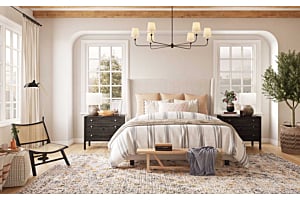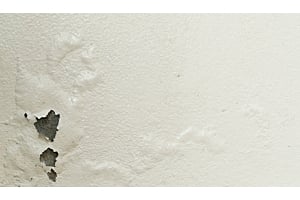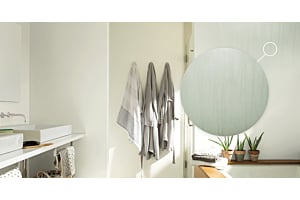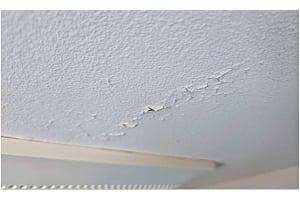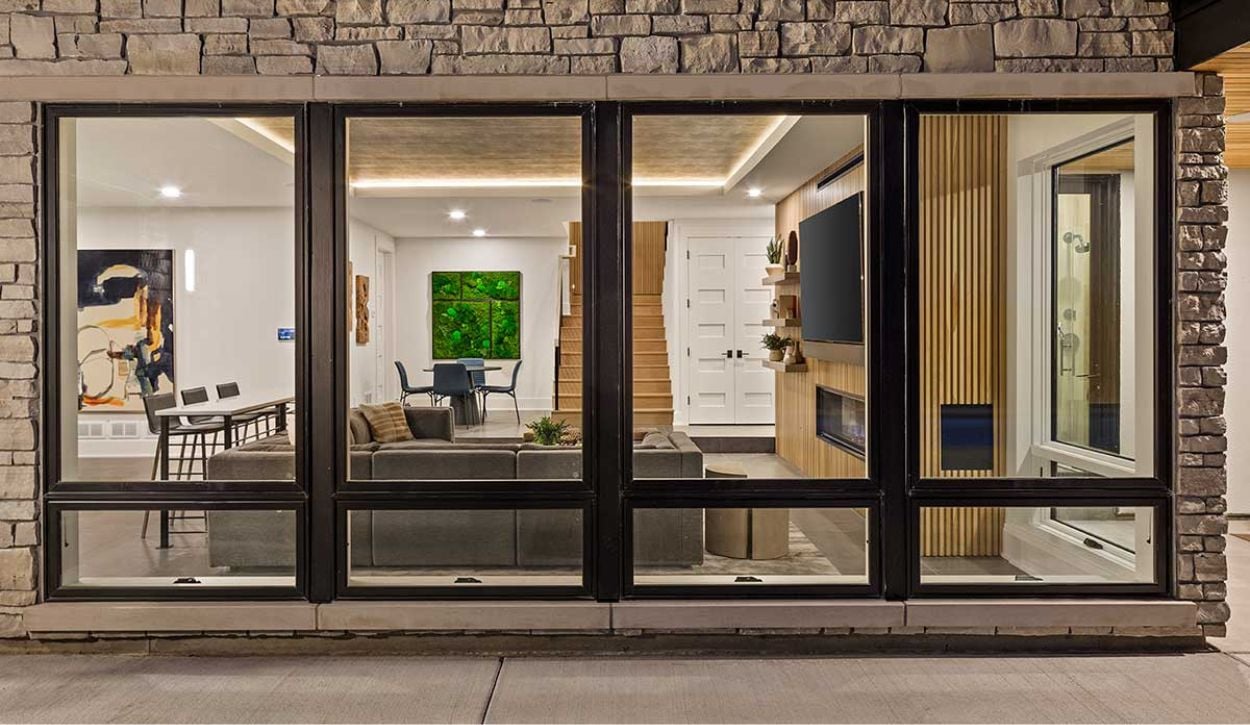
Quality basement windows are a valuable addition to any home. Expansive views bring light into a walkout basement or daylight basement, and energy-efficient windows in any type of basement help regulate temperatures and save on energy bills. While you may have a particular window type in mind when you think of basement windows, there are a wide variety of designs for any basement layout. Read on for more details on the best basement window types – and choose the perfect fit for your living space.
Factors to Consider When Selecting Basement Window Styles
In addition to picking the most pleasing aesthetic for your home, you will want to consider a number of practical factors as you select a basement window type. These include the layout of your basement, installation requirements of the window design, and how important energy efficiency is to your basement living space.
Basement Layout
The right types of windows for your basement will depend greatly on the layout of the space. Above-ground basement rooms allow for significant natural light and windows with wide outswings, while rooms that are partially underground require more strategically placed windows. Below-ground basements often feature windows high on the wall, that either need to be fixed for maximum moisture protection, or have easy-to-operate hardware that also ensures a tight seal. And if the law requires that your finished basement needs basement egress windows, you will need to select a style that provides a sufficiently wide opening in the space that you have.
Installation Requirements
Knowing the installation requirements of your window style is epecially important if you have a below-ground basement, are choosing a replacement window, and/or prefer the window to open for ventilation. For example, windows with an outswing, such as a casement window, would require a window well unless the basement is above ground level.
Energy Efficiency
Every high-quality window style boasts energy-efficient qualities including modern seals and window panes designed to minimize temperature fluctuation. However, if energy efficiency is your primary concern, there are window designs that will achieve your goal better than others. Any kind of window that opens for ventilation will inevitably allow more air leakage than a fixed window. And among ventilated windows, some styles – such as casement windows – have fewer weak points than windows with many moving parts, such as slider windows. Read on for more specifics about each type of basement window style available.
Which window material should you install in a basement?
Basements are unique spaces within a house, often subject to colder temperatures and higher moisture content than a ground-level floor. Depending on how far your basement is underground, the difference could be marginal or significant. These factors make it particularly important to install energy-efficient window materials – especially if you intend on spending time in a finished downstairs living space or a basement workspace.
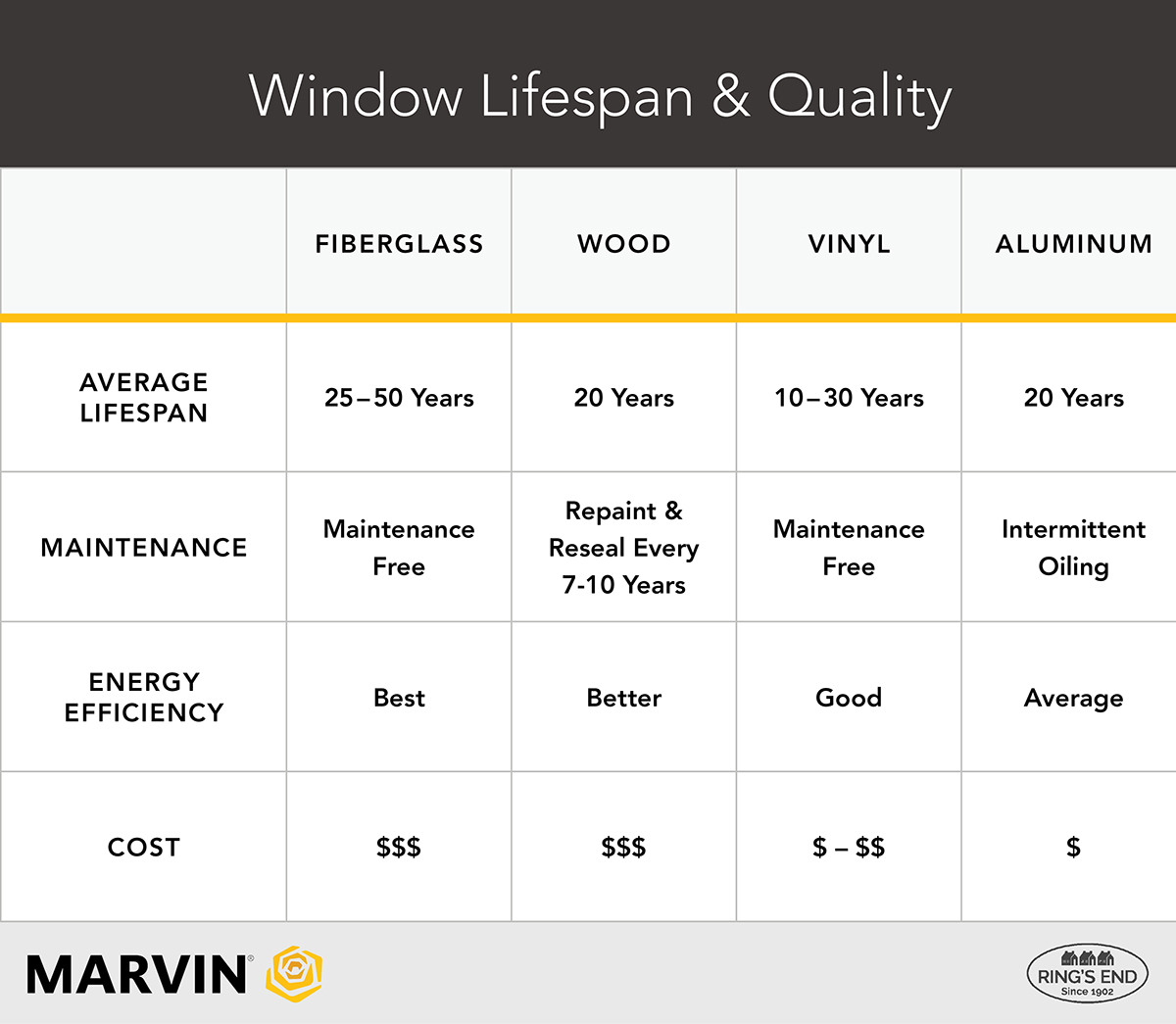
Outperforming wood, aluminum, and vinyl windows, fiberglass windows are the most energy-efficient choice for basements. This material is also maintenance-free, and offers peace of mind that your windows will perform well even during inclement weather conditions and cold winters.
Best Types of Basement Windows
Although there are a number of practical factors that go into choosing the right basement window, there are a wide variety styles available that achieve both beauty and practicality! Consider the benefits and best uses of each of the following styles and pick the design that you will enjoy for years to come.
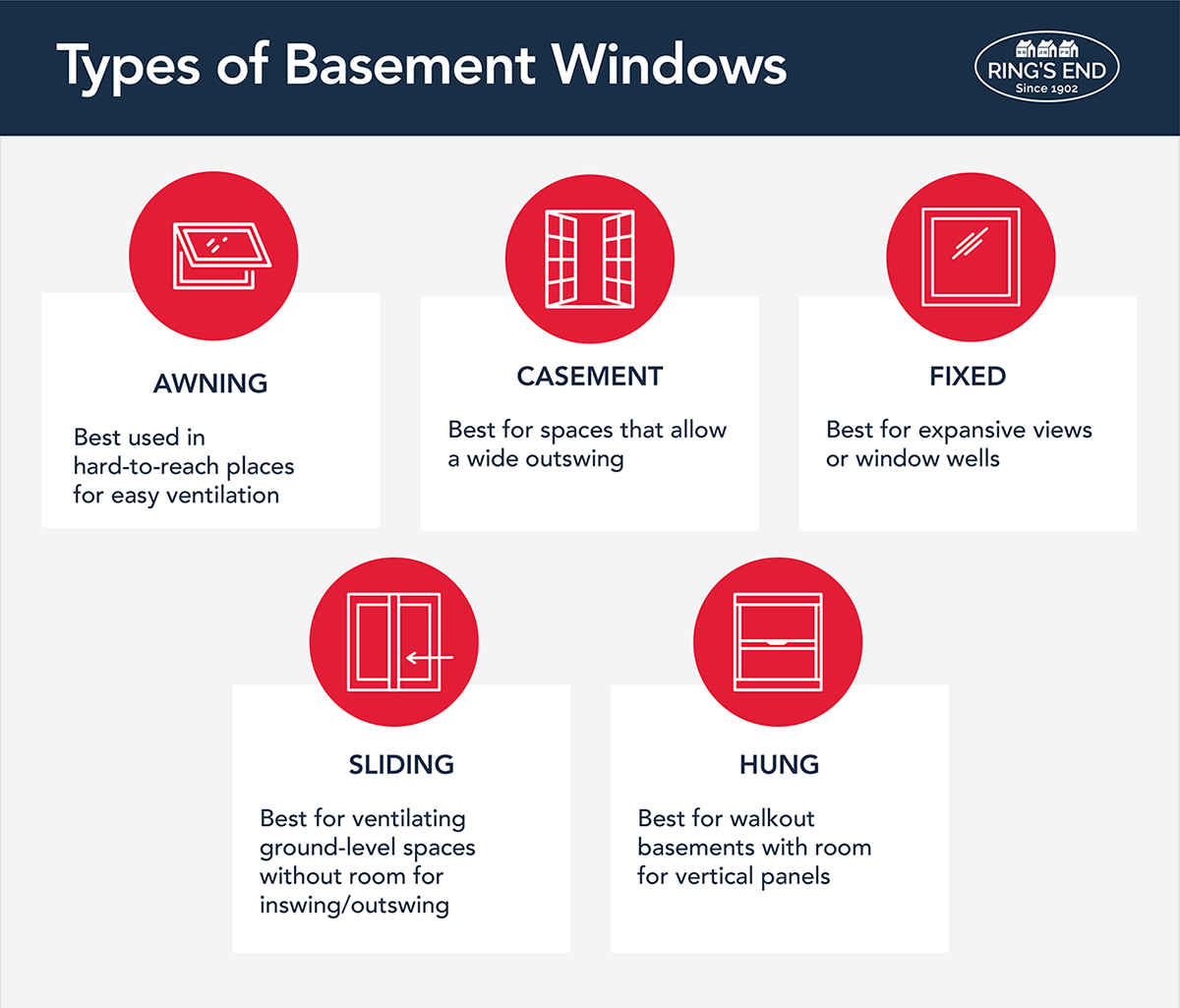
Awning Windows
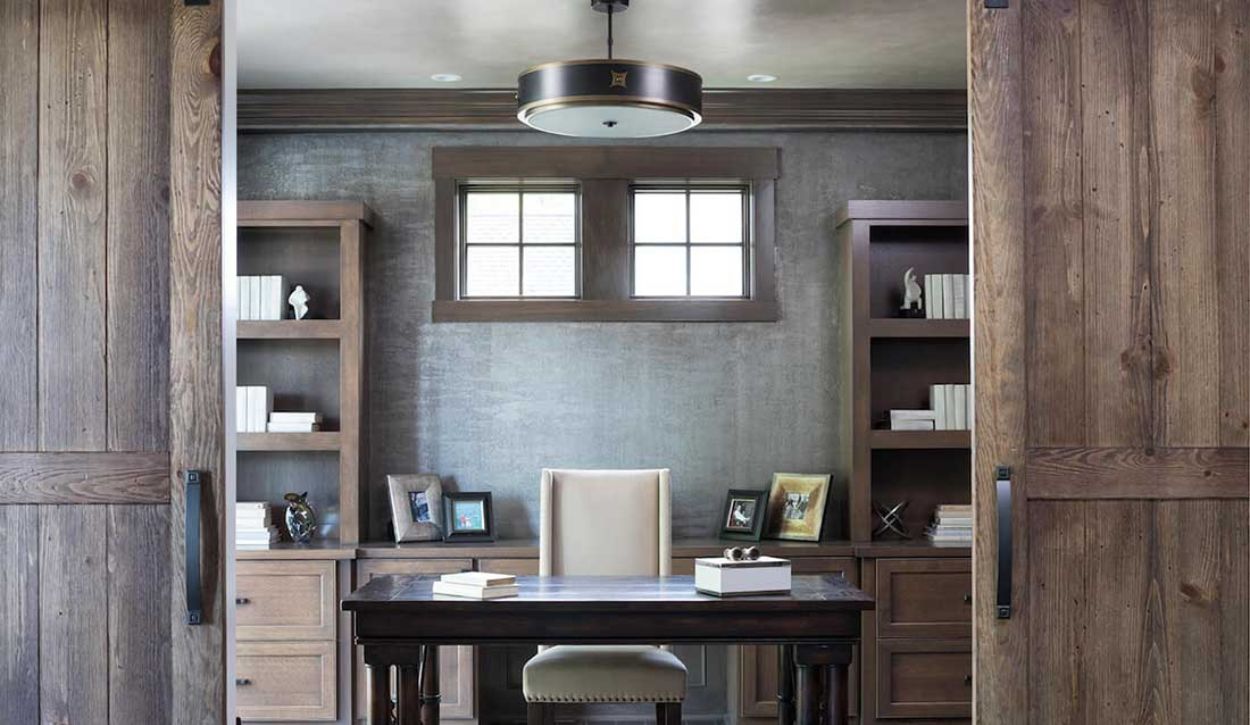 Home office featuring Marvin Elevate Awning Window
Home office featuring Marvin Elevate Awning Window
Awning windows are a convenient window style often installed in high or low spaces on a wall. These ventilating windows swing from hinges on the top of the frame, opening outward, and are operated with a hand crank or push handle for ease of use. When an awning-style window opens inward, it’s called a hopper window – another popular choice for basement rooms, especially where there is little room outside the window.
Since they do not swing outward from the side, awning windows are a practical choice for homeowners who want the option to let in fresh air without needing significant space outside the window. Awning windows are also an energy-efficient window style, because the single sash design creates such a tight seal. High winds that might cause double hung windows to leak, for example, will actually create a tighter seal on an awning window.
Casement Windows
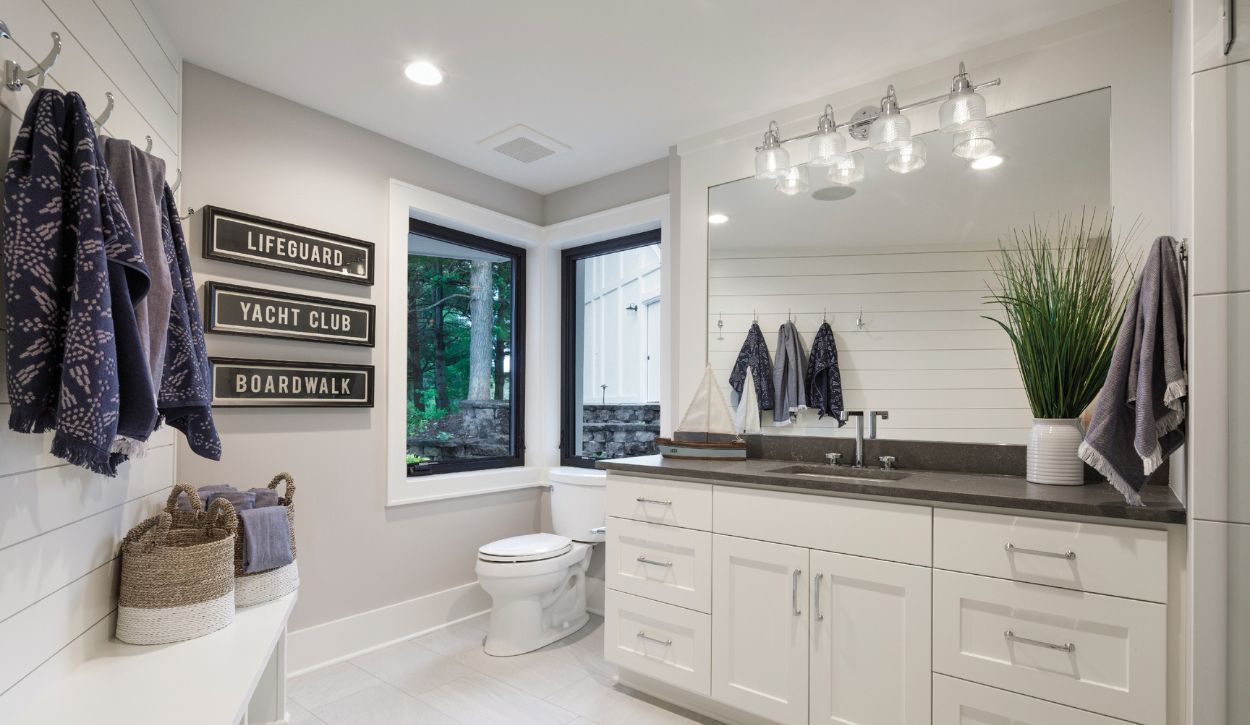 Lower-level bathroom featuring Marvin Ultimate Casement Narrow Frame Window.
Lower-level bathroom featuring Marvin Ultimate Casement Narrow Frame Window.
Casement windows operate very similarly to awning windows, but swing out from the side instead of from the top. Depending on how much of your basement is underground, you may need a window well to accommodate a casement window’s outswing. Casements are appreciated for their safety and energy efficiency, thanks to a single pane that seals tightly against the window frame.
Often installed in hard-to-reach places, casements give homeowners the option of easy ventilation, with an unobstructed view while closed. Plus, if building codes requires your finished basement to have an additional emergency exit, large casement windows can qualify as egress windows due to their wide opening.
Fixed Windows
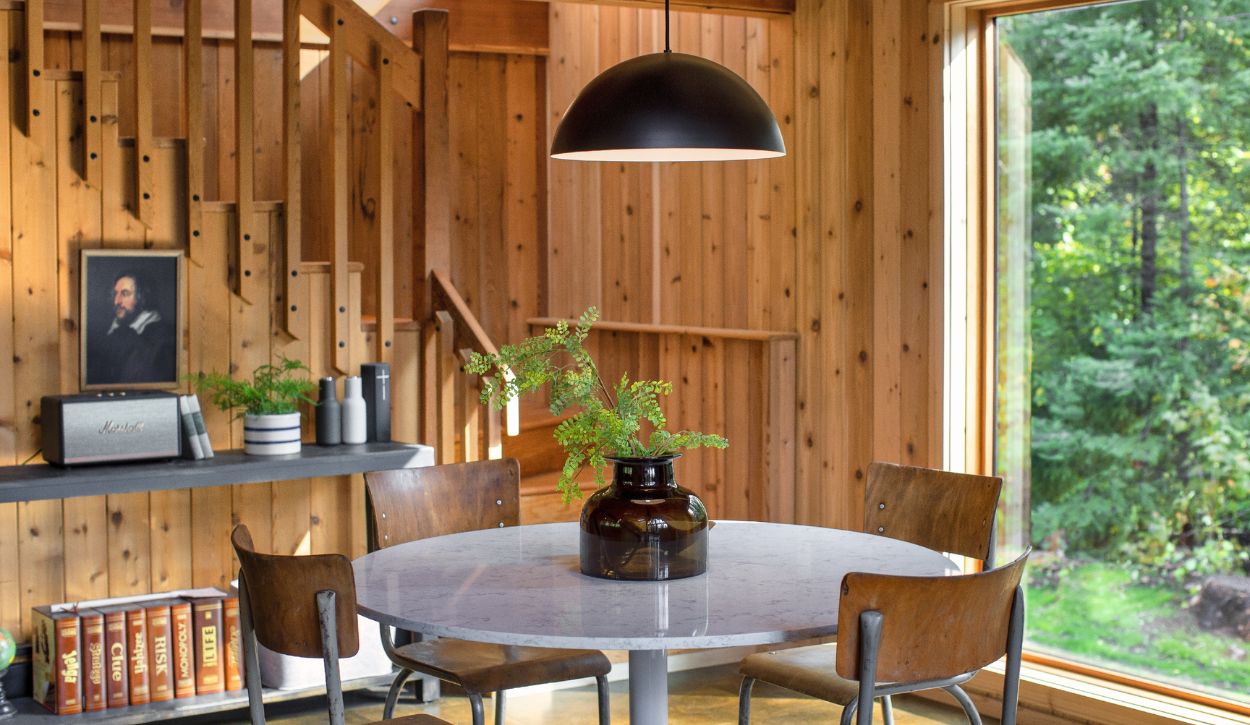 Lower-level living space featuring a picture window from Marvin’s Signature Ultimate Collection
Lower-level living space featuring a picture window from Marvin’s Signature Ultimate Collection
Customizable to fit nearly any space, fixed windows are a homeowner’s most versatile option in terms of location, size, and style. While a fixed window can’t provide airflow, it brings natural light to any type of room. Sealed entirely from the outside elements, you can be confident that a high-quality fixed window will help keep moisture out of lower-level rooms and ensure temperature-controlled air stays inside.
Picture
The large glass panes in picture windows display expansive views in walkout basements. This window style is ideal for homes that are built on a slope with a beautiful view to appreciate even from a downstairs floor. And since picture windows don’t open, their permanent seal provides added energy efficiency and less chance of damage to the window’s hardware. Specialty-shape fixed windows are often paired with picture windows and can be customized to fit unique spaces.
Glass Block
Homes with below-ground basements may find that a glass block window is the best way to let in light while keeping a very tight seal against moisture. Glass blocks are often paired with window wells, creating a thick wall of glass that protects your basement from rainwater and blurs the external view.
Sliding Windows
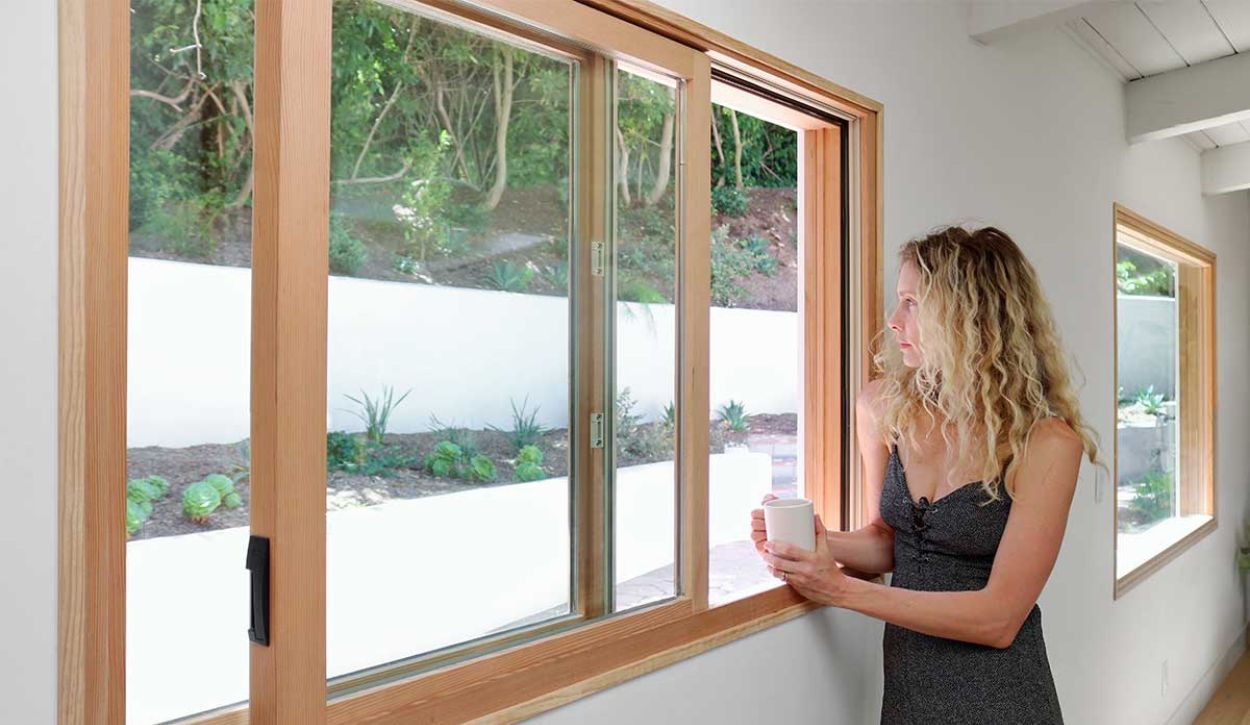 Ultimate Glider window from Marvin’s Signature Collection
Ultimate Glider window from Marvin’s Signature Collection
Sliding windows, also known as glider windows, are made up of multiple glass panels that move along a track. This window style is an excellent choice for homeowners who want a wide window opening that doesn’t need space inside or outside to accomodate a swinging pane. Best for walkout basements, sliding windows provide an expansive view to the outdoors with the option of opening for fresh air.
Hung Windows
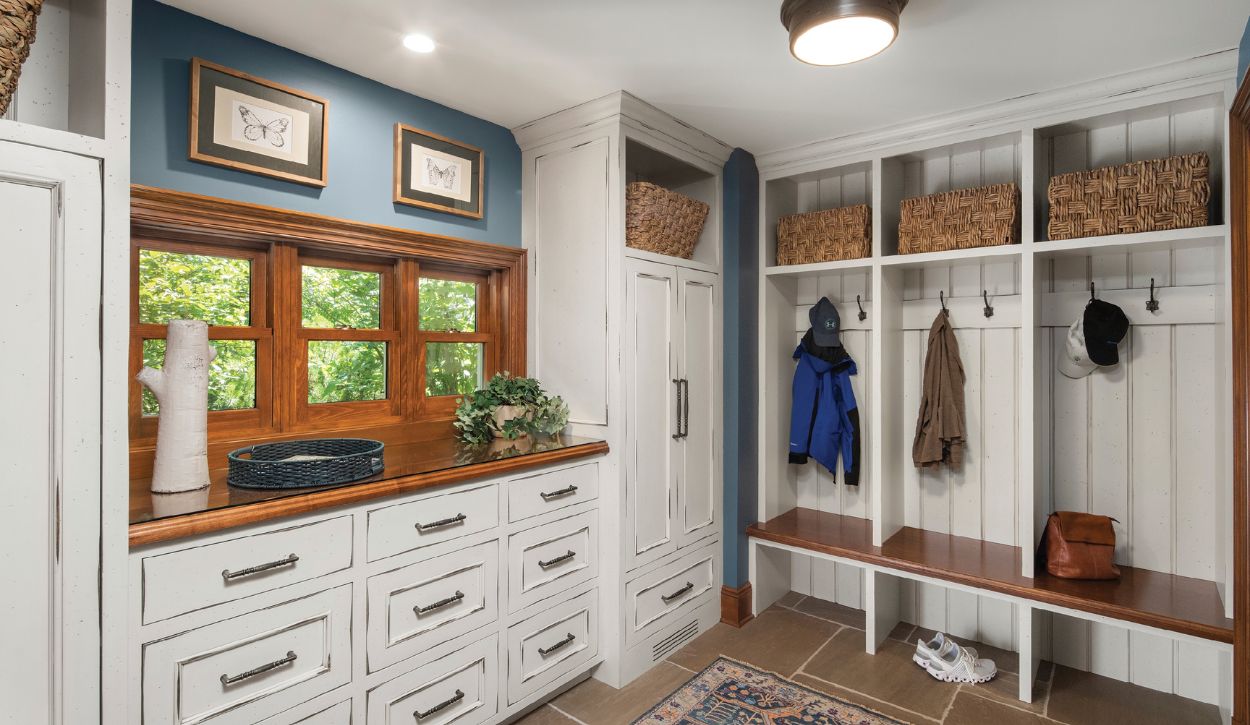 Mudroom featuring Marvin’s Signature Ultimate Double Hung G2 window
Mudroom featuring Marvin’s Signature Ultimate Double Hung G2 window
Hung windows are a classic style that complements historic homes and brings traditional charm to your living space. Single or double-hung windows are effective for letting in fresh air to walkout basements and come with a wide variety of customization options. These windows do require enough frame space for the panels to slide vertically which can limit installation possibilities.
Tips for Basement Window Replacement
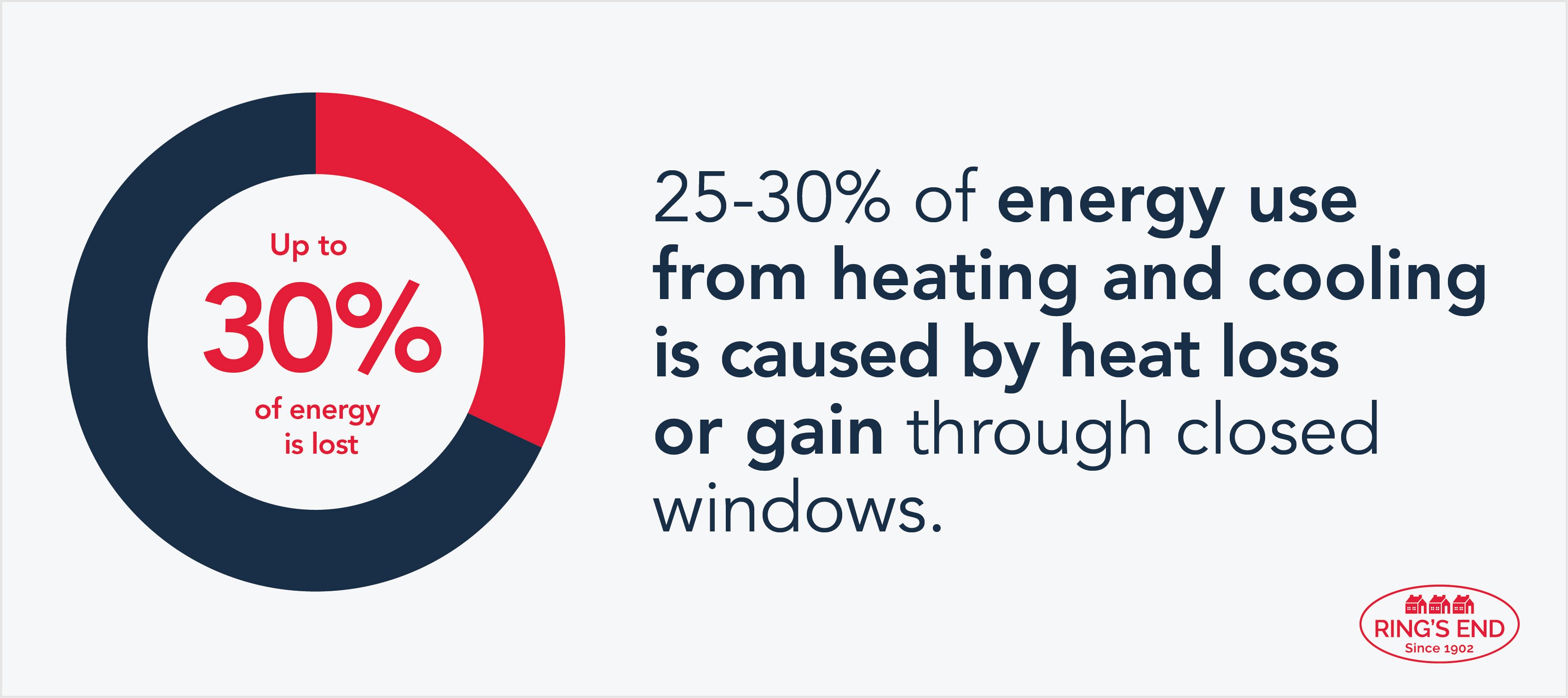
Replacing old basement windows is a great way to save on utility costs and improve the overall look of your living space. A window insert is the easiest type of window replacement, but it requires that the new window’s design fits into the existing opening.
If the frame is out of square, or needs extensive repairs, you will need a full-frame window replacement or a new construction window. This is also the case for vinyl frames, which aren’t strong enough to support a window insert. While the process for a full replacement window is more labor intensive, it also allows for a wider range of design options and is the most energy-efficient upgrade.
Explore More Window Designs at Ring’s End
Whether you’re looking for the perfect basement window replacement or installing new basement windows, the team at Ring’s End is confident you’ll find the perfect choice in premier manufacturer Marvin’s extensive collection of window styles and high-performance materials.
Explore our Marvin Windows Buyer’s Guide to learn about their extensive selection of designer windows. And if you’d like expert advice on the best choices for your home, contact the Ring’s End team through our online chat or by texting (203) PRO-HELP.


